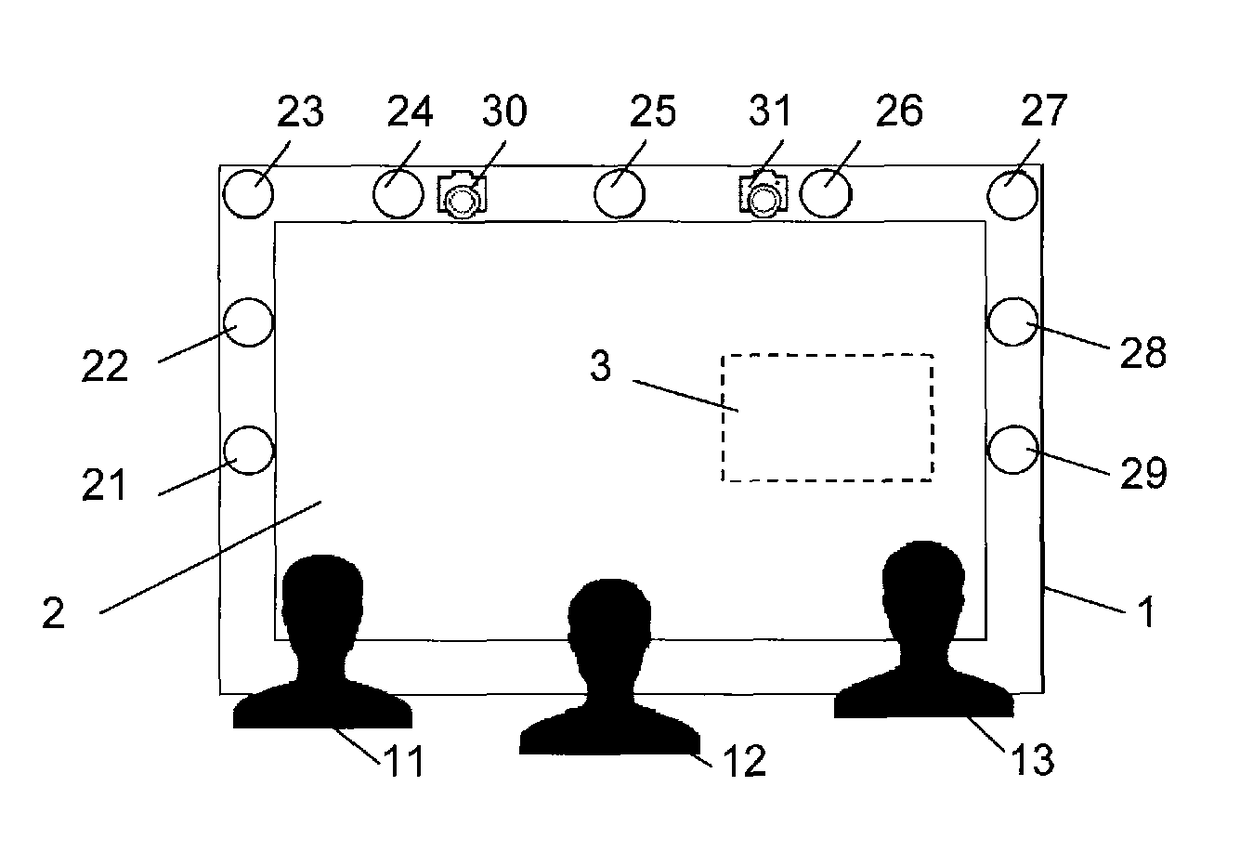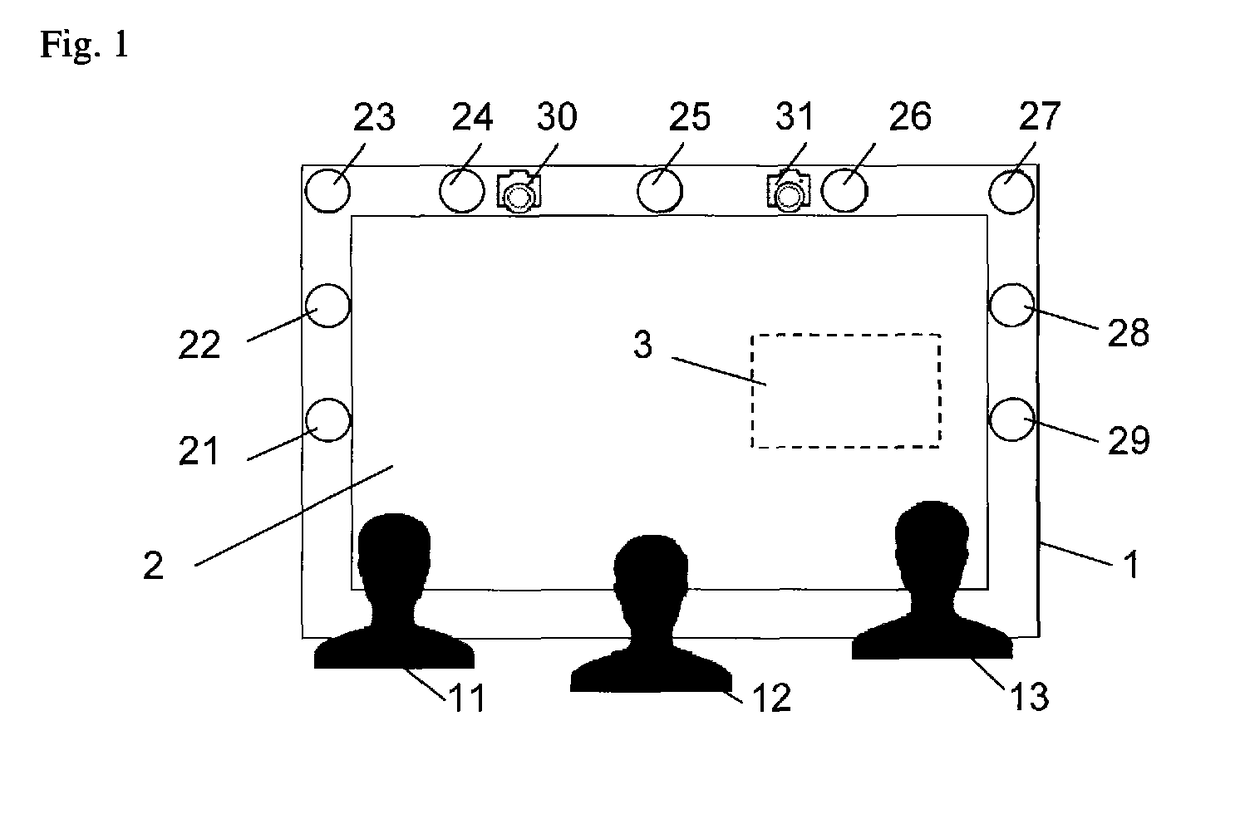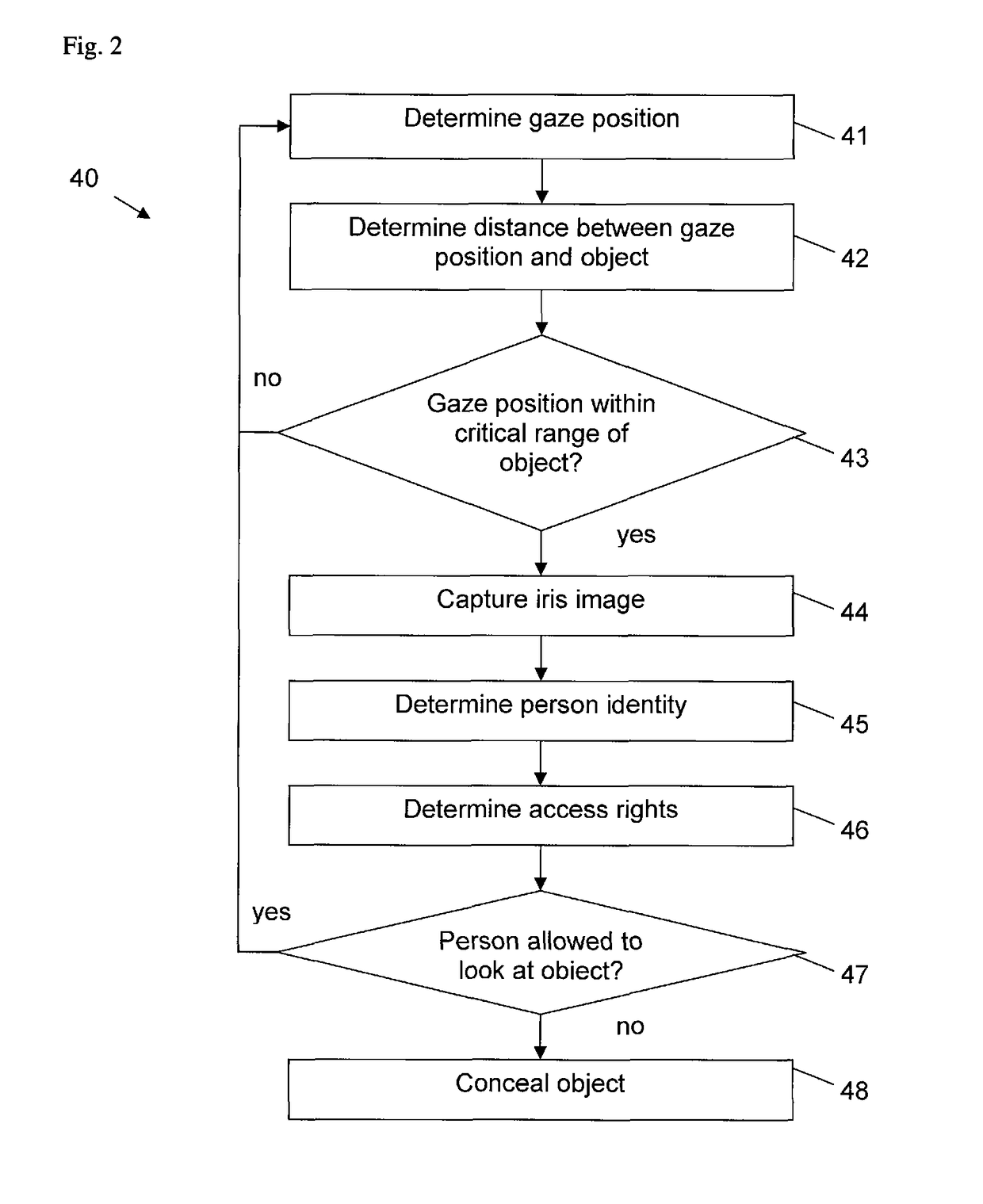Operating a display of a user equipment
a technology for user equipment and display, applied in the direction of acquiring/recognising eyes, program/content distribution protection, instruments, etc., can solve the problems of at least partly obscured objects, difficult to get sharp vision of objects, etc., and achieve low additional effort and stable over time
- Summary
- Abstract
- Description
- Claims
- Application Information
AI Technical Summary
Benefits of technology
Problems solved by technology
Method used
Image
Examples
Embodiment Construction
[0024]In the following, exemplary embodiments of the present invention will be described in more detail. It is to be understood that the features of the various exemplary embodiments described herein may be combined with each other unless specifically noted other wise.
[0025]FIG. 1 shows schematically a user equipment 1. The user equipment 1 may comprise for example a mobile telephone, for example a so-called smartphone, a tablet PC, a computer monitor or a flatscreen of a home entertainment system or a flatscreen of a collaborating surface arranged for example at a wall or in a desk in an office. The user equipment 1 comprises a display 2, for example a liquid crystal display, on which information for persons 11-13 looking at the user equipment 1 may be presented. The information presented on the display 2 may comprise for example photos, images, drawings, charts, diagrams, videos or text documents or a combination thereof. The user equipment 1 comprises furthermore a plurality of i...
PUM
 Login to View More
Login to View More Abstract
Description
Claims
Application Information
 Login to View More
Login to View More - R&D
- Intellectual Property
- Life Sciences
- Materials
- Tech Scout
- Unparalleled Data Quality
- Higher Quality Content
- 60% Fewer Hallucinations
Browse by: Latest US Patents, China's latest patents, Technical Efficacy Thesaurus, Application Domain, Technology Topic, Popular Technical Reports.
© 2025 PatSnap. All rights reserved.Legal|Privacy policy|Modern Slavery Act Transparency Statement|Sitemap|About US| Contact US: help@patsnap.com



